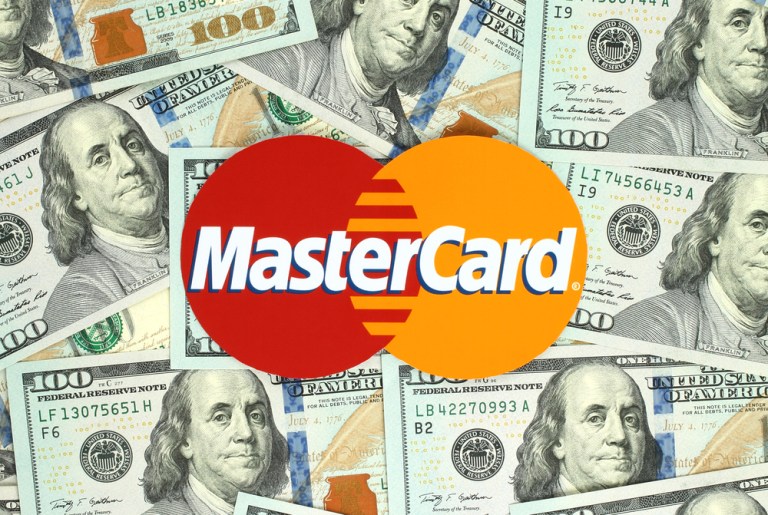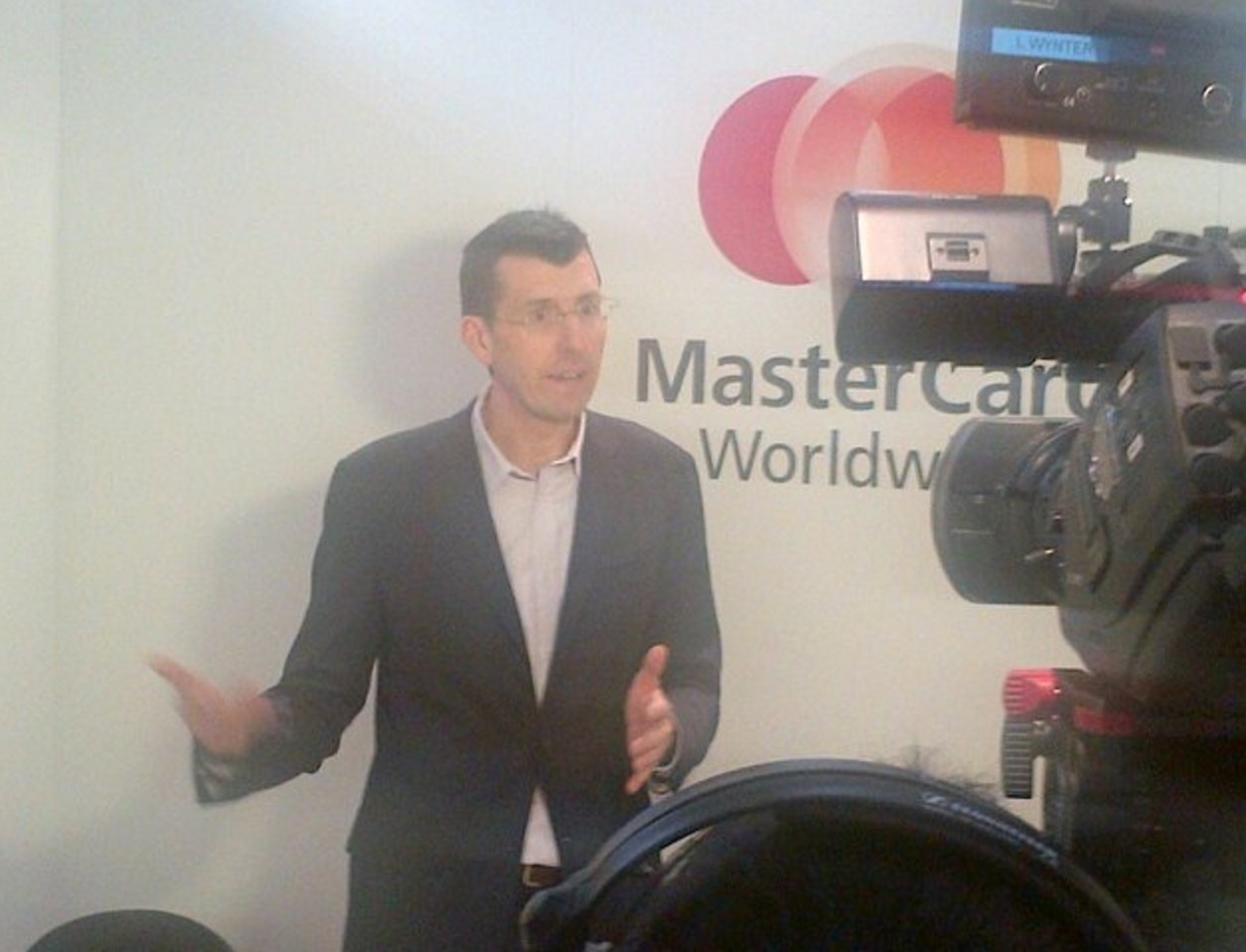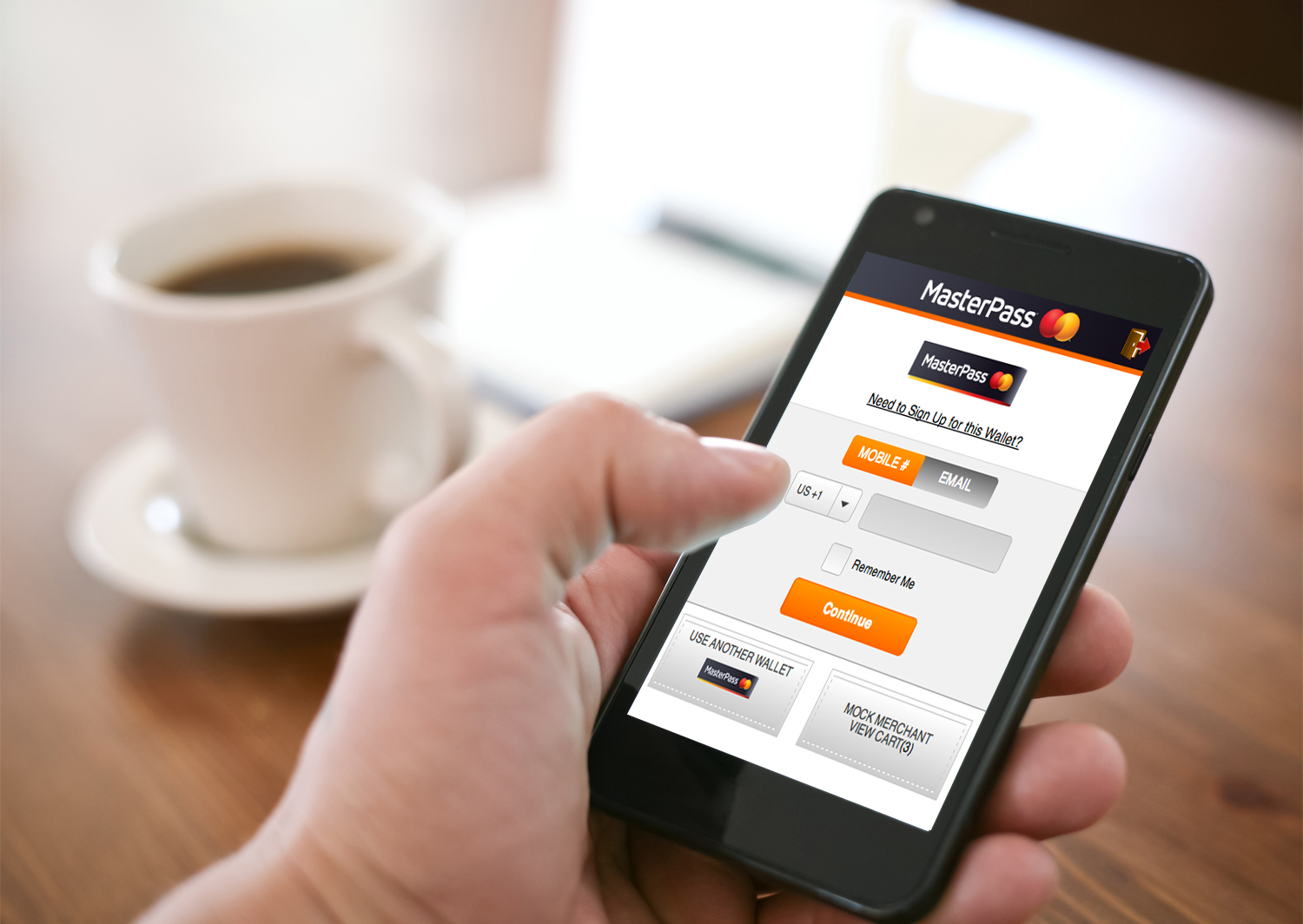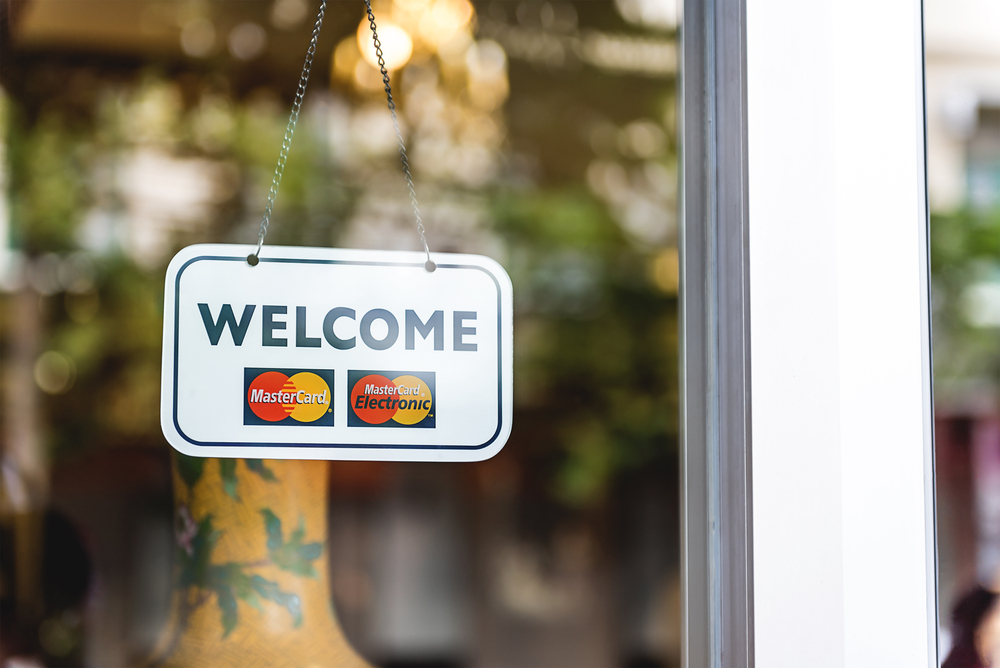Mastercard’s Call To Digital Payments Action

Digital payments are the wave of the future, but it’s been a pretty rocky — and inconsistent — road to getting there for both merchants and consumers. And we’re still not “there” yet. Mastercard’s Jorn Lambert, EVP of digital channels and regions, told Karen Webster that what’s holding progress back is the absence of a set of guiding principles that guide a consistent experience for merchants and consumers. And it’s decided to do something about it. Mastercard is releasing its digital payments “call to action” to action today in an effort to accelerate its ignition. Will it make a difference?
Fact. Digital commerce has been a reality for more than two decades.
Fact. The launch of the iPhone in 2007 and the App Store in 2008 opened everyone’s eyes to the impact that mobile would have on payments and commerce.
Fact. Twenty years and hundreds of millions of smartphones later, the digital payments experience is anything but consistent anywhere — online, in-store and in-app.
There are lots of reasons for that inconsistency.
No one really thought to focus much on “digital” since so much of retail sales still happened in the physical store.
Why bother putting money into the 3 percent of sales happening online when 97 percent was still done in physical stores using plastic cards that worked just fine? And until foot traffic started to drop in those stores and categories like books, clothes and sporting goods began to shift significant chunks of those sales online, there seemed to be no real reason to shift focus.
At the same time, consumers began to use their mobile devices to discover the things that they wanted to buy but increasingly abandoned those purchases given the frictions encountered along the way.
The same frictions that consumers tolerated when transacting on a laptop or desktop — typing in card numbers, shipping and billing addresses — were simply not tolerated when shopping on a mobile device. Merchants lost sales to those online retailers that could make the buying process easy, secure and consistent.
A number of digital wallet enablers have emerged, in force, over the last five or so years to take their place alongside the early digital payments pioneers — PayPal and Amazon — with the promise to help merchants seize that opportunity. The chicken-and-egg game of acceptance and adoption has intensified as merchants look for options that help them find incremental sales and customers and consumers look for options to reduce friction in their online shopping experience.
Increasingly, consumers and merchants want even more than that. Like the plastic cards snuggled in their wallets today, they want a payments experience that’s largely consistent across all of the shopping channels that they use today and may emerge tomorrow.
Mastercard EVP of Digital Channels and Regions Jorn Lambert told me last week that Mastercard believes there’s another reason for this inconsistency: the absence of a framework or a set of principles that everyone in the business of enabling digital payments ascribes to.
Lambert told me that diversity of experience and value proposition are only as good as the foundation upon which the digital payments experience is built. He strongly believes that, in a time of great disruption and technological change — as we are experiencing in payments and commerce — a core set of principles that everyone embraces is the only way that we can accelerate our digital payments progress as a connected commerce ecosystem. Without one, he asserts, we’re all left with, more or less, a high-tech Tower of Babel.
So, he said, Mastercard decided to do something about it.
Today, it’s issuing a digital payments call to action: four principles that Lambert and Mastercard said are aimed at accelerating the movement toward digital payment adoption.
I sat down with Lambert to understand why those four principles — accessibility, transparency, security and privacy — will make it easier for consumers and merchants to embrace the digital payments movement.
KW: Why does the industry need a digital payments “call to action,” and why did Mastercard decide to take on the role of industry convener in that regard?

Source: twicsy.com
JL: Every journey needs a roadmap and a set of mile makers along the way to eliminate the uncertainty involved in traveling to a new place. Moving from plastic to digital payments is certainly a journey to a new payments and commerce land. We view this call to action as the framework the ecosystem needs to make that journey with confidence.
Two years ago, the first tokenized multi-merchant wallet was brought to market — Apple Pay. Since then, a number of other digital payments solutions have entered the market; at the same time, there are an increasing number of devices connected to the internet and, therefore, capable of enabling commerce. That, we believe, will fuel a massive expansion in digital payments, not just on mobile phones but also embedded in what we are calling “IoT” — connected cars, connected TVs, wearables, appliances — and the multitude of things that we’ve not even contemplated yet.
We think that’s great since these new environments will reach new users and enable new technologies to deliver great consumer and merchant experiences.
But with that great opportunity comes complexity — and the potential for confusion on the part of merchants and consumers. Each solution — and digital payments enabler — has slightly different objectives and a slightly different emphasis as they move to deploy their solutions. And they may not even have a clear understanding of what other stakeholders in the value chain are looking for. We spent a lot of time talking to stakeholders — consumers, merchants, issuers and new entrants to the payments ecosystem — and have concluded that there is a strong need — and even a strong demand — to rally around a number of common principles.
These principles — accessibility, transparency, security and privacy — are essential to reduce the complexity and streamline the ability to scale digital payments in a very safe and secure way. Our goal isn’t to dictate standards but rather provide a consistent framework to simplify how digital payments take shape.
KW: We’ve learned over the last two years that there are things that consumers do value and don’t value as part of their digital payments experience. As I look at this call to action and your four principles, they seem to be driven by what is good for the consumer. Was that by design?
JL: Yes, it was. Consumers can lose confidence in what we are collectively trying to achieve. Of course, all stakeholders have to be on board when any new technology in payments is being introduced, but consumers need to be convinced that this is good for them or else we will all fail. Similarly, even when there is consumer demand, merchants need to believe that adopting a technology is in their best interests in order for acceptance to expand and the ecosystem to thrive.
KW: Accessibility — so critical. We’ve certainly learned the importance of ubiquity, which reduces uncertainty. But what you seem to be implying with “accessibility” is that just having universal acceptance isn’t enough. Having a consistent experience with their digital payment provider across all points of transacting is even more critical. We certainly don’t have that today…
JL: I think it’s the predictability that we’re trying to emphasize here. Consumers need to know if it’s going to work — if it doesn’t, they won’t bother. We think that it’s perfectly reasonable for the Mastercard cardholder to expect that the solution will work with all standard Mastercard interfaces. Similarly, merchants should be able to reach as many cardholders as possible when they spend the time and money to integrate with a new technology. So, we think that accessibility is critical for both consumers and merchants.
KW: Transparency — your second principle. That’s about consumers seeing an acceptance mark like they do today — in this case, Masterpass — and then the issuer’s brand that enables them to complete the transaction. Your hypothesis is that it is the combination of network brand — Mastercard — and issuer brand that increases consumer comfort and stimulates usage and adoption.
JL: Yes, it is truly a combination of both. There are a number of benefits — some are delivered by the network, and others are delivered by the issuer. It’s only fair that the consumer, when making their transaction, clearly knows which products they are using, that they will be participating in the rewards that those products offer, etc. We think that it has to be the case that digital wallets not make it difficult for consumers to make that connection.

KW: Got it. But as commerce becomes more contextual and connected devices proliferate, transparency gets tricky — Uber’s a great example of that. How does a digital payments player adhere to the principle of transparency in a world in which, sometimes, opaqueness is not intentional, it’s just part of making the process friction-free for the consumer?
JL: Certainly, we don’t want to introduce unnecessary steps in the process. But even in these environments, there’s an opportunity to introduce transparency. It’s quite easy, we think, to notify the consumer that they’ve just made a purchase using their Mastercard card. It’s all about the design of the experience and making sure that consumers always understand what they are using to complete their transaction.
KW: Security — it’s table stakes for sure. And no one, I hope, argues that security isn’t important in the digital payments world. Why does this need to be called out as a principle?
JL: I think consumers are still very nervous, and we have a lot of work to do to reassure them that, even if their credentials are stored in a digital wallet, that these credentials are protected and, even if compromised, useless to fraudsters. So, from our standpoint, it’s about the consistency of the security standard — and that is tokenization.
Consumers not only want a sense of security, but they also want to have a sense of control. Consumers can have credentials in many places, some of which they may have even forgotten about. We want consumers to know that, if they have credentials out there in a digital payments account, that they have control over how that information is used. Tokenization can put the consumer back in control.
We think that there is a real consumer angle here that, as an industry, we can all rally around and where we also think banks have an inherent advantage. Similarly, tokenization provides many advantages to merchants — tokens provide industry standard security, reduce risk in the system by removing real card numbers and result in higher approval rates.
Tokenization is very well-adopted in many banks, but it is still very early days. We want to make sure that, as an industry, we keep moving the tokenization standard forward since it has proven to be a very effective way to secure digital payments. We feel strongly that, as other players enter payments and the digital payments area specifically, we want to be very clear that digital credentials should be tokenized. We will then be better able to build on this secure foundation and innovate in a variety of ways to authenticate consumers more strongly using biometrics, for example. We feel an obligation to protect the integrity of the payments ecosystem so that consumers and merchants continue to feel confident that their transacting environments are secure.
KW: Let’s talk about privacy. Why did you decide to make this one of your four principles?
JL: Yes — Mastercard builds privacy and data protection into the fabric of our business and has a longstanding commitment to privacy. We value privacy because of its value to people. We believe our customers, cardholders and merchants have a right to understand how their data is handled, and we consider it our responsibility to provide them with the most current and state-of-the-art privacy and security protections available. We, and our partners, use the data only for the purposes for which it was provided.
KW: So, we have these four principles. How do you hope the ecosystem will react to seeing them? What is your expectation for putting this out there?
JL: I’m hoping that most people will agree and embrace this. We believe that, as a result of making these principles very visible to consumers, that they will know that, when they use their issuer branded Mastercard, they can do so with confidence.
For the industry, we hope that embracing this framework will accelerate the path to digital payments adoption, and for merchants, that they can increase conversions, with the knowledge that those transactions are conducted in a secure and private manner. Issuers, we hope, will be better able to connect with their cardholders in a digital manner and deliver richer, more rewarding experiences, and that more consumer adoption of digital will mean more merchants will enable acceptance of digital payments as well.
KW: Sounds to me like this is more than just a suggestion that the industry rally around four principles but rather a call to action for the ecosystem of commerce and payments to visibly and vocally get behind them and adapt their digital payments plans accordingly. Am I wrong about that?
JL: Not at all. This really did start out as a way for us to think about our own digital payments strategy and roadmap — more or less, evidence of our own commitment to increasing adoption of digital payments. It’s evolved to become a call to action for others to join that commitment based on the many conversations we have had across the ecosystem, globally.
We think these principles are essential and that the lack of consistency in how they are interpreted by the many digital payments solutions out there has held all of us back for too long. It’s time to move forward, together, as an ecosystem, for the benefit of the many consumers and merchants who want to embrace a digital future and enjoy all of the promise and potential that it holds.

